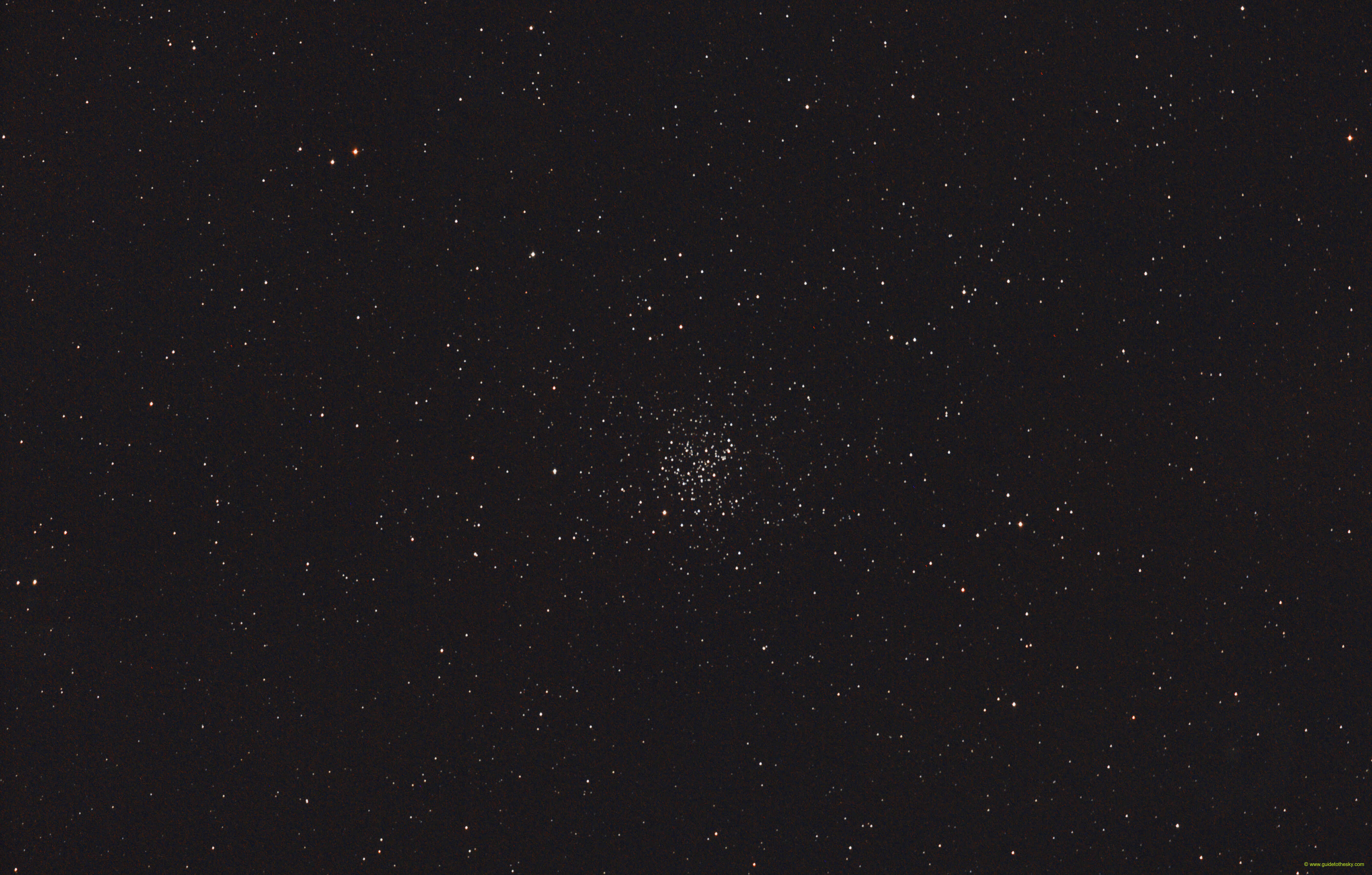Messier 67 - Cancer

Es un objeto sorprendente,lo vemos de la 7ª Magnitud conjunta y está formado por más de 200 estrellas, la mayoría por debajo de la 11 Magnitud, apretadas en un disco de más de 25' de diámetro angular es decir, comparable a la Luna llena. Eso da idea de su elevada densidad. Muy distinto del famoso "Enjambre" situado unos 10º al norte, compuesto por estrellas más brillantes pero mucho menos abigarrado que nuestro M 67.
M67 Dista de nosotros unos {{ object[0].M67.mesDistances[0].dist }} {{ object[0].M67.mesDistances[0].unit }}.
M67 - Cúmulo del ojo de Oro - en la IA
Messier 67 (M67), also known as NGC 2682, is a fascinating and well-studied open star cluster located in the constellation Cancer (the Crab). Here's a breakdown of its key characteristics:
Key Features:
- Type: Open Star Cluster
- Constellation: Cancer
- Distance: Approximately 2,700 - 2,900 light-years
- Age: Roughly 4 billion years old. This makes it one of the oldest known open clusters in the Milky Way. Most open clusters disperse long before reaching this age.
- Diameter: About 25 light-years across
- Brightness: Apparent magnitude of 6.1 (can be glimpsed with binoculars under good conditions). It's a challenge to see with the naked eye unless you have very dark skies.
- Star Count: Contains around 500 stars, with about 100 resembling our Sun.
- Coordinates (RA/Dec): 08h 51.4m, +11° 49'
Why is M67 Important?
-
Age and Evolution: M67's advanced age makes it a valuable laboratory for astronomers to study stellar evolution. It provides a sample of stars that have had time to evolve significantly, including stars that have evolved off the main sequence into red giants.
-
Similarity to Our Sun: The presence of numerous solar analogs (stars with similar mass, temperature, and composition to our Sun) allows astronomers to study the possible future of our own solar system.
-
Exoplanets: M67 is a target for exoplanet searches. The detection of exoplanets in such an old cluster helps understand planetary formation and stability in different environments. Several planets have been found orbiting stars in this cluster.
-
Formation: The cluster's survival despite its age is somewhat of a puzzle. It suggests that it may have formed in a region of the galaxy with a relatively low density of other stars and gas clouds, reducing the disruptive forces that would normally disperse an open cluster over time.
Observing M67:
-
Binoculars: Under dark skies away from light pollution, M67 can be seen as a faint, hazy patch.
-
Telescopes: Small to medium-sized telescopes reveal a beautiful, densely populated cluster of stars. Larger telescopes can resolve more individual stars and reveal color differences between them.
In summary, Messier 67 is an exceptional open star cluster due to its great age and the presence of many Sun-like stars, providing valuable insights into stellar evolution and exoplanet research.
Más información sobre Messier 67 en NASA/IPAC.
Mapa alrededor de Messier 67
Otros identificadores de M67:
"C 0847+120" ,"M 67" ,"NGC 2682" ,"OCl 549.0" ,"[KPR2004b] 212" ,"HR 3515" ,"[KPS2012] MWSC 1585",

